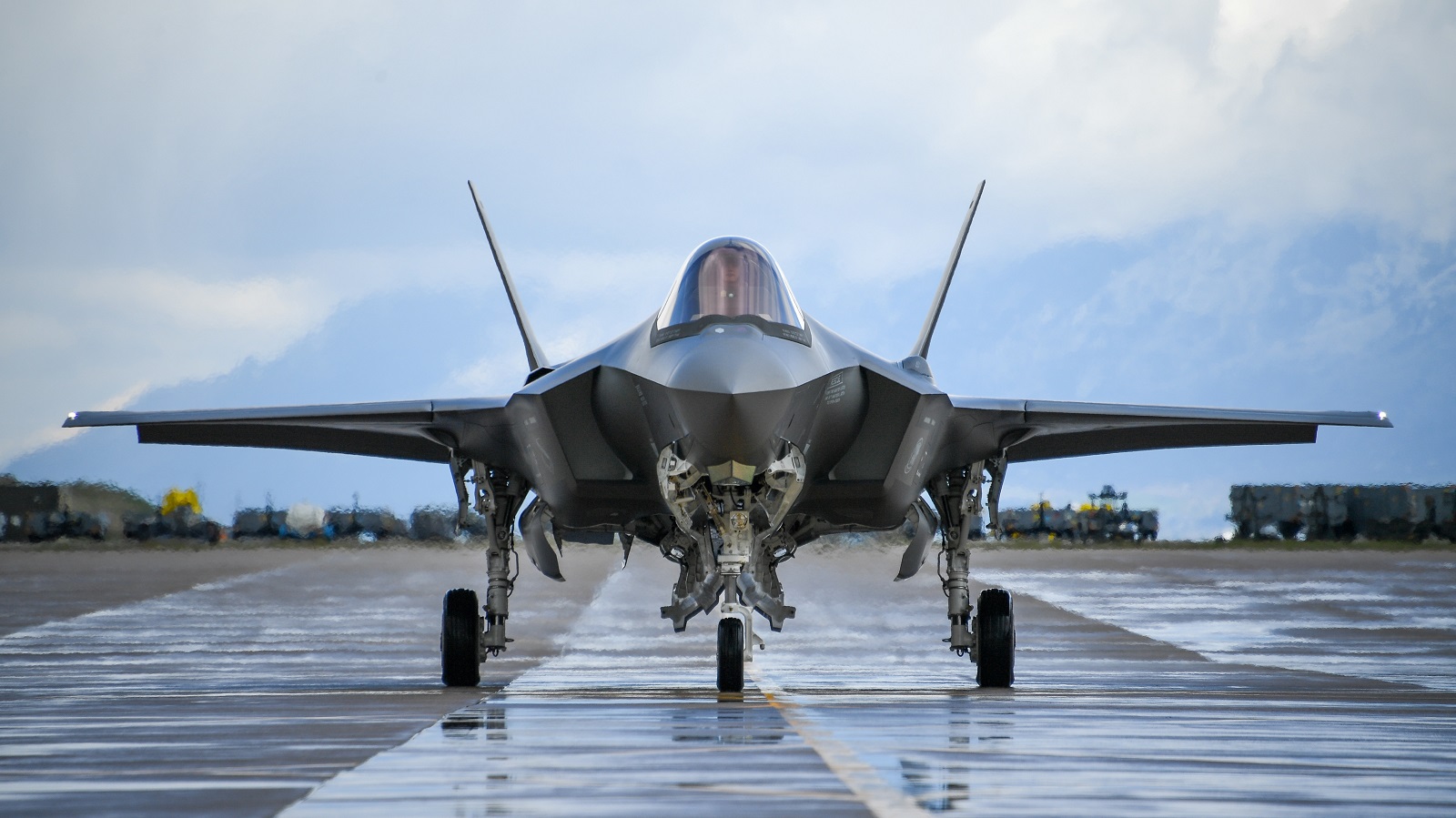
South Korean Newspaper: U.S. F-35s Will Replace F-16s in Korea
The U.S. military plans to begin rotating F-35 stealth fighters into South Korea starting in a few years, a South Korean newspaper reported.
The American planes would join a growing fleet of South Korean F-35s. The U.S. Air Force is already practicing employing the F-35s in a war with North Korea.
“U.S. Forces Korea is expected to deploy state-of-the-art F-35A stealth fighter jets at major air bases here in place of the current bread-and-butter F-16s,” The Chosunilbo reported. “A South Korean government spokesman on [Sept. 1, 2019] said they will be deployed from early 2020s.”
The U.S. Air Force maintains around 60 F-16s in three squadrons — plus a squadron of around 20 A-10 attack jets — at two Korean air bases. The Air Force also keeps two F-16 squadrons in Japan.
The South Korean air force plans to deploy 40 F-35As in 2021. South Korea reportedly also plans to buy vertical-landing F-35Bs to embark on at least one new, large assault ship.
The planned F-35 deployment should come as no surprise. F-35s slowly are replacing F-16s in U.S. Air Force squadrons and eventually could replace A-10s, as well. By the 2030s the F-35 could be the most numerous fighter type in the Air Force inventory.
American F-35 units have begun practicing one key tactic for operations on the Korean Peninsula. On Nov. 19, 2018, two Air Force wings in Utah launched 35 F-35 stealth fighters in a short span of time.
The November 2018 group-takeoff, which the air force calls an “elephant walk,” involved F-35As from the 388th and 419th Fighter Wings at Hill Air Force Base. The active-duty 388th and reserve 419th train air force F-35 pilots.
The 388th’s 34th Fighter Squadron, whose F-35s have the latest Block 3F software, also has a front-line role. In late 2017, it became the first Air Force F-35 unit to deploy overseas, to Japan.
At the time of the elephant walk—the first for the F-35—the Utah wings possessed around 40 F-35s. The wings are on track to receive a combined 72 F-35s by 2019.
The Hill stealth fighters took off one at a time in roughly 30-second intervals. In just a few minutes, the wings launched as many F-35 sorties as they normally do in a full day of routine training.
“Exercising with multiple squadrons of F-35s can demonstrate our ability to defeat potential adversaries wherever they may arise,” Maj. Caleb Guthmann, the 34th Fighter Squadron’s assistant director of operations, said in a statement.
Elephant walks significantly contribute to the readiness of American and allied squadrons in South Korea and nearby countries.
In the event of war with North Korea, U.S. and allied forces plan to quickly target the roughly 13,000 artillery pieces that Pyongyang has massed along the Korean demilitarized zone. In the early hours of a war, that artillery likely would bombard Seoul, which lies just 25 miles south of the DMZ
An air campaign targeting North Korea would require 2,000 sorties per day, U.S. military officials told Air Force magazine. The F-16s and A-10s in South Korea and Japan—and any F-35s that deployed in time for the first day of fighting—likely would be the first to hit North Korean artillery. And they’d have to launch fast to save lives in Seoul.
There is a reason that the 7th Air Force in South Korea and Japan have organized more elephant walks than most air force commands have done. “The threat here on the peninsula is very real, and countering that threat needs to be in the forefront of our minds,” Col. William D. Betts, then-commander of the 51st Fighter Wing in South Korea, said in 2017.
The U.S. Air Force organized elephant walks in South Korea in 2016 and 2017 but not in 2018.
In 2018 the Trump administration suspended Vigilant Ace as a concession to North Korea, hoping that Pyongyang, in turn, would suspend its nuclear-weapons program. North Korea has continued to develop its nukes.
David Axe serves as Defense Editor of the National Interest. He is the author of the graphic novels War Fix, War Is Boring and Machete Squad.


